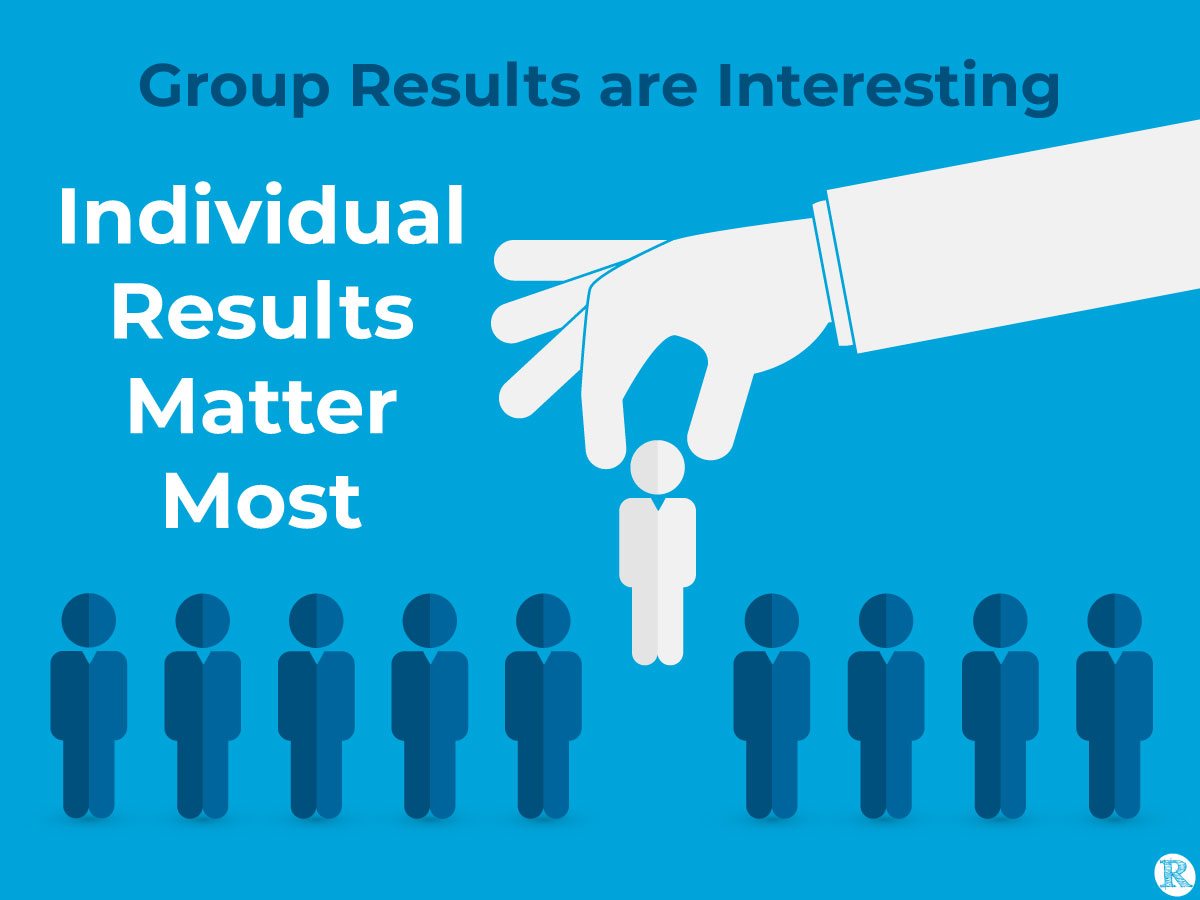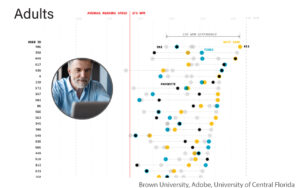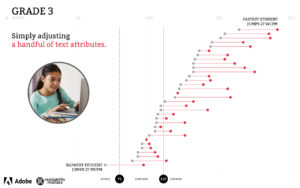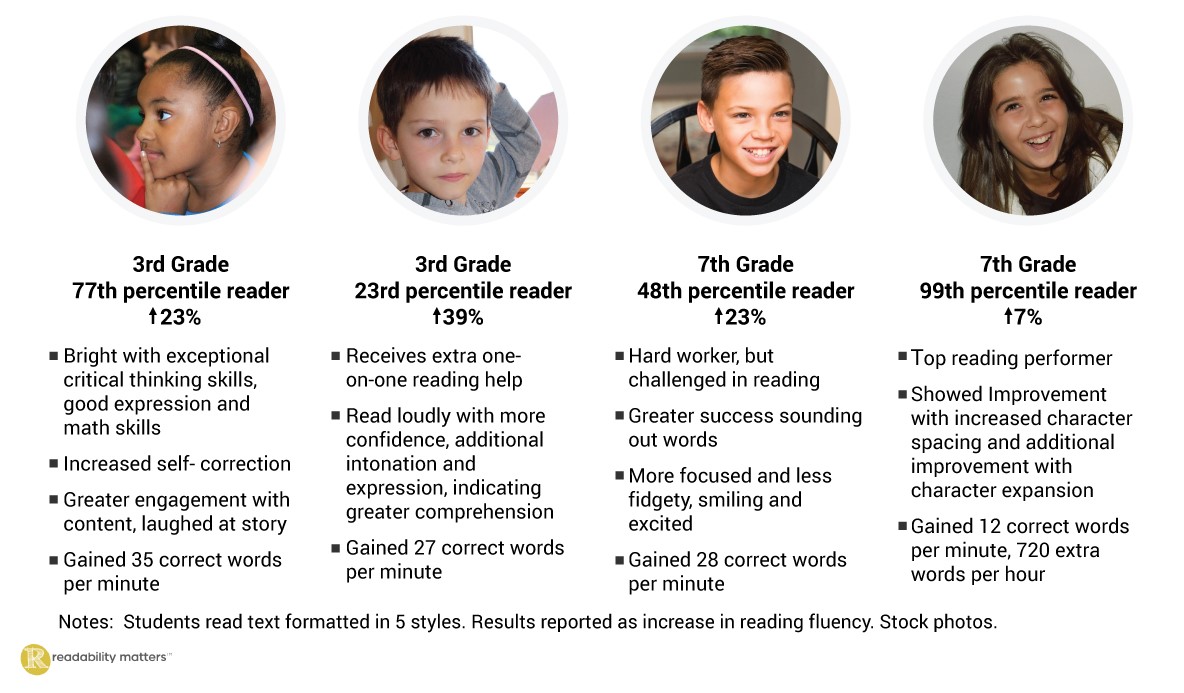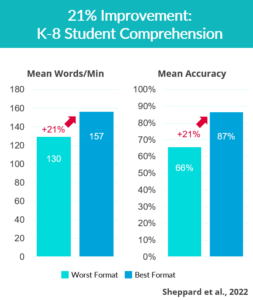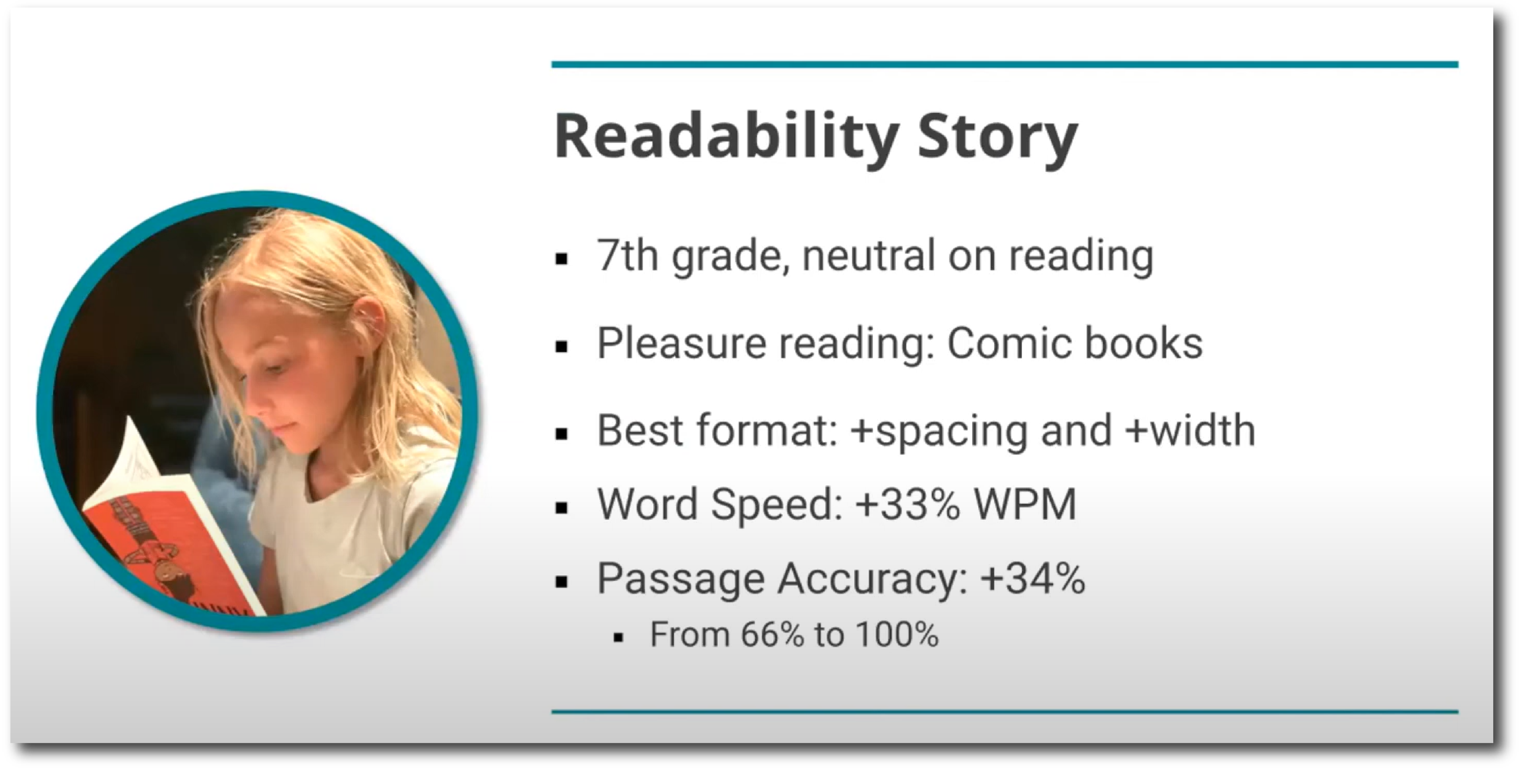Group Results are Interesting
Individual Results can be Life-Changing
Our research colleagues have been surprised and excited by the changes to reading speed and comprehension they see when changing reading text formats for study participants. We at Readability Matters are excited too. It is newsworthy to report an average gain of 21% in both reading speed and comprehension for a group of readers. (Sheppard et al.)
Let’s not stop there.
The real stories happen at the individual level. When a reader is instantaneously able to read more quickly, more accurately, with greater comprehension, greater engagement and/or enjoyment, magic happens. Students who previously reported that they “hate reading” became more willing to participate fully in academic learning. Parents report that homework stops being a fight. Adults read more, learn more and accomplish more.
Group Results Don’t Tell the Whole Story
College-aged and Adult Readers
Consider the group results listed here. What could you do with extra pages of reading per hour without losing comprehension?
- By personalizing font choice to the individual reader, reading speed gains of 4 to 5 extra pages per hour are possible–without a loss of reading comprehension. (Adobe Research)
- A reader might read War and Peace in 18 hours rather than 35 hours. (Adobe, Treitman)
- Participants’ reading speeds (measured in WPM) increased by 35% when comparing the fastest and slowest fonts without affecting reading comprehension. (TOCHI 2022, Wallace et al.)(Adobe Education Summit presentation)
- Adults from outside the field reading medical information using Personalized Reading Formats (PRFs) accelerated reading of medical health records by 15% while maintaining comprehension levels. (Human Factors and Ergonomics in Health Care, Ball et al.)
Student Reading Speed – Words Correct per Minute
Students in this study experienced an average increase in their speed of accurate reading of 17%. Some of the meaningful individual stories are included here. Note that none of the students who participated in our 2018 classroom study with Adobe had a learning disability or qualified for an IEP (Individualized Education Plan).
- The slowest reader in the class gained 27 WCPM, a 39% gain in his speed of accurate reading with a text format better suited for him (measured by Oral Reading Fluency.)
- His immediate increase in reading fluency (words correct per minute) moved him from a Dibels benchmark score that categorized him as “at risk” to a score of “some risk” in literacy skill acquisition.
- The fastest reader in the class also improved by 27 WCPM, a 17% gain for her, granting her more learning capacity for the time she spends reading.
- It is interesting to note that many of the above-average readers in the class experienced above-average improvements in oral reading fluency.
- In addition to changes in speed, individuals in this study experienced changes in confidence and engagement.
Student Comprehension
In our reading comprehension study led by cognitive neuroscientist Dr. Shannon Sheppard, the group read passages and answered questions on the material to evaluate any changes to comprehension. The group gained 21% in reading speed while at the same time gaining 21% in their comprehension accuracy.
- Six reading formats were tested. There was not one best format for all readers, nor was there one worst format for all readers.
- The font format that was best for the smallest number of students was best for 12% of them. Given that there are 35.5 million students in K-8th grade in the US. Even this smallest segment represents 4.2 million students needing the format and reading less effectively if they are forced to use the default format. (Adobe Education Leaders Summit)
- One 7th grader gained 33% in reading speed while simultaneously increasing her comprehension accuracy by 34%. Her answers to comprehension questions went from 66% correct to 100% correct when reading with a text format that was better for her. This is like improving from a D to an A. (Nobles)
- Consider a student who reads 50% faster when moving from a standard textbook font to a cleaner, rounder font with additional character spacing. Should the student have to take his test with the standard font? An assessment that slows his reading by 50% is inequitable, putting him at a significant disadvantage compared to a student who happens to read best with the standard font.
- Sheppard et al. note, “It is likely that making font recommendations based on group-level findings will disadvantage many readers.”
Individual Results Matter Most
For the above reasons and more, it is important to evaluate changes in reading performance for the individual reader rather than the group. Historically, content providers have made group-level decisions because it was required for printing on paper. Some providers will need to continue to do so and can use group-level results to optimize their design choices. However, new options exist in the digital world. The best solution is for providers to allow reader personalization of the text format presented, empowering each reader to be the best reader they can be.
Do more. Look beyond the averages. Evaluate the individual impacts and understand the implications. Create better reading experiences for individual readers.
More engaged students learn more and enjoy better educational trajectories
Better Reading
Increased speed, accuracy and comprehension.
More engagement, less fatigue.
Adults get more done

